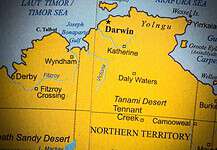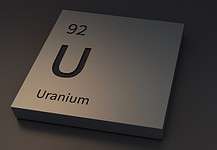MORE than 2000 geoscientists will meet this October for the inaugural Australian Geoscience Council Convention in Adelaide. Elizabeth Fabri spoke with Australian Geoscience Council (AGC) president Dr Bill Shaw about the upcoming event, and how the industry can work together to “smooth out” the booms and busts in Australian mining.
Q. AGC will soon launch its first Australian Geoscience Council Convention. What prompted you to start the event?
The Australian Geoscience Council organised the very successful 34th International Geological Congress which was held in Brisbane in 2012. This event heralded the value and importance of getting as many geoscientists together as possible, to share our technical knowledge and work experiences.
By having a large critical mass all engaging at once we identified opportunities to actively work together on common issues.
We also generated sufficient revenue to be able to make that vision into reality. While the AGC has been around since the 1980s, the excitement that was generated in Brisbane gave us the impetus to work much more strongly together.
The AGC is made up of eight member organisations, many of which are familiar to resource professionals in mining and energy, and which all have specialities: AIG (geoscientists), AusIMM (mining), ASEG (geophysics), AAG (geochemistry), AGIA (data), GSA (geology), IHA (hydrogeology), and PESA (oil and gas).
The AGC’s role is to promote and raise the profile of geoscience. Our convention in Adelaide, AGCC 2018, 14-18 October, is the next step for us in developing a broad acceptance of the importance of geoscience to our community.
This event is running during Earth Science Week and is open to all stakeholders in our society.
Of course we want to see as many geoscientists as possible come along, but there is much that is non-technical as well. There will be a Big Issues Day devoted to more general discussions, workshops and field trips, evening functions, a focus on early career geoscientists, emphasis on diversity, a large GeoEXPO for exhibitors, opportunities for sponsors to get their message out, a special afternoon for secondary school science teachers, a three-minute presentation challenge, an active social media network, many meetings and forums, and much more.
This is likely to be the biggest Geoscience event in Australasia since 2012 and is planned to be held every four years.
Q. You’ve mentioned ‘smoothing out the booms and busts in Australian mining’ will be a central discussion point at AGCC 2018.
This is a challenge that many people initially consider is intractable.
Of course Australia cannot control the global metal markets, and in a democratic economic system it is not conceivable that we would. However that does not mean we cannot enhance and optimise the way we are impacted by these external commodity cycles. Geoscientists specialise in dealing with large, complex, ‘fuzzy’ problems.
This is the science that deals with ‘deep time’ (from now back to the origins of the Earth 4.6 billion years ago), huge scale differences (from crystalline processes to plate tectonics), and physical extremes (high temperature, and/or high pressure, to aquatic and atmospheric conditions).
Bringing 2000 geoscientists together to consider hard problems will certainly provide new insights and approaches.
Without tipping the possible outcome too much, geoscientists can ride out the ‘busts’ by building and playing to their key strengths. More geos engaged in our education, social and political systems will increase the chance of our multicultural pluralist society engaging with the earth in the most effective and efficient way. It will make them more effective and better utilised.
Q. What opportunities do you see in Australian mining from a geological perspective?
The UNCOVER initiative has been big news for nearly five years and many other countries are starting to develop similar programs to maximise the effectiveness of looking and drilling under cover.
We have to create a viable funding model to maximise the value of our lead in this field before our intellectual capital is eroded or hijacked.
The big achievement so far is getting everyone talking and working together on a common framework. We need Government and industry to actively push this initiative harder.
One thing I have learnt in a long geoscience career is that you cannot predict the next boom commodities.
But we know that there are large areas of Australia still unexplored and uncharacterised. There will be more ‘gold rushes’. We need a framework to support the explorers, developers, landowners and other stakeholders.
We need open communication about issues that impact on all Australians. The increasing price of energy is an example of short-sighted thinking, when there are safe technologies that could be carefully pursued.
Q. What emerging technologies are you excited about?
Australian miners are among the most innovative in the world. Time and again we have developed software packages that break new boundaries, and we effectively spread our influence rapidly everywhere that our professionals go.
The early hype around AI and Big Data is now settling down, but robotics and remote control systems will provide safe work for many people for many years to come as the mining industry modernises.
A manufacturing approach to commodity production is developing in large iron, copper and coal mining companies.
This will trickle down into medium size companies as the support industries mature and start to provide their services to the smaller players.
One of the big drivers is when there is a change from cost minimisation to production optimisation (that is, getting the grade up instead of the unit costs down).
Q. What career prospects are opening up in geoscience? Many geologists struggled during the downturn. Is there enough work out there?
The message that I have developed here is that geoscience is for everyone. That means career opportunities are limitless.
Geologists make great scientists, explorers, innovators, software programmers, report writers, data guardians, communicators, historians, and journalists. Yes, they are also mostly pretty good people as well, so they are of value in many roles.
The more geoscientists we have in society the better off we will be.
Thinking of geoscientists as miners, or technicians who log drill holes is self-defeating, for them and for society. We can use hyperspectral scanners to do the logging. We need geoscientists for thinking, interpreting and decision-making, on mine sites and in many other situations.








































